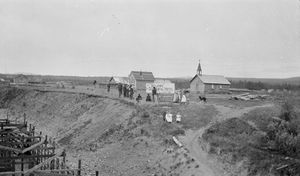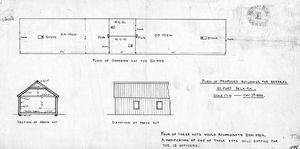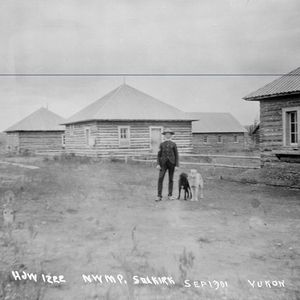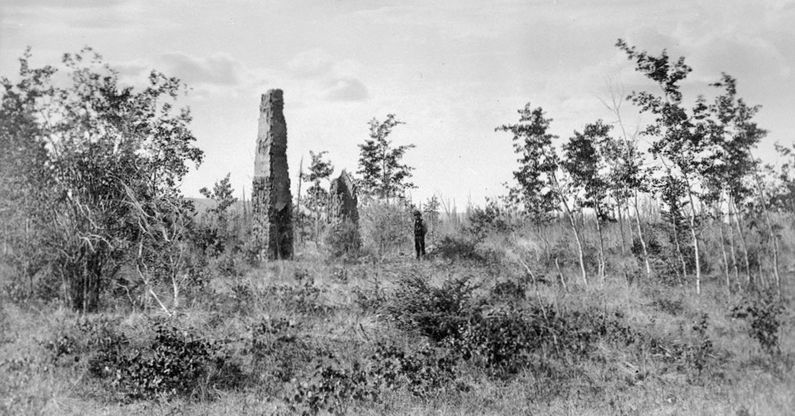Fort Selkirk
|
Fort Selkirk (1848-1852, 1892-1950) - A Hudson's Bay Company (HBC) fur trading post and fort first established by HBC Factor Robert Campbell in 1848 on the south side of the Yukon River near its confluence with the Pelly River. The post was relocated in 1851 to the north side of the Yukon River. The new post was attacked and pillaged by the Chilkat Tlingit First Nation in 1852 and abandoned by the HBC. The HBC store was reestablished in the 1930s and operated until the early 1950s. Also the site of the Fort Selkirk Yukon Field Force Post and the Fort Selkirk NWMP Post.
History of Fort SelkirkEstablished as a Hudson's Bay Company (HBC) fur trading post and fort by HBC Factor Robert Campbell in 1848 on the south side of the Yukon River near its confluence with the Pelly River. That location proved to be flood prone and not a suitable site.  The post was relocated in 1851 to the north side of the Yukon River. This move angered members of the coastal Chilkat Tlingit First Nation who had enjoyed a trading monopoly with the local First Nations peoples. The new post was attacked and pillaged by the Chilkat Tlingit in 1852. The post personnel were driven off and when they returned little remained. The post was then abandoned by the HBC.
Yukon Gold Rush (1898-1900)During the Yukon Gold Rush, Canada struggled to keep peace & order and to exert sovereignty over the Yukon. The town of Fort Selkirk could be reached by Yukon River steamers and was a natural assembly and logistics point. To that end the Canadian government sent two groups to the settlement, the North West Mounted Police (NWMP) would maintain law & order while a force of about 200 military troops would insure that the thousands of American miners did not try to appropriate the territory for the United States. Yukon Field Force (1898-1900)  The military group, the Yukon Field Force, arrived at Fort Selkirk in 1898 and built a military complex of 11 large log buildings, complete with a central parade, on the east side of town. The force was commanded by Lt. Colonel Thomas Dixon Byron Evans, Royal Canadian Dragoons. A detachment of two officers and 50 men were sent to Dawson City in October 1898. Duties included guarding gold shipments, ceremonial duties and some patrolling. The whole unit was recalled and assigned elsewhere in June 1900. Stores and some equipment were turned over to the NWMP when the Yukon Field Force left.
North West Mounted Police (1898-1911, 1932-1949) In 1898, the North West Mounted Police (NWMP) established a small post in the center of town (Fort Selkirk NWMP Post). It was one of a string of posts set up along the Yukon River to establish law & order. As the Gold Rush declined, River traffic and the population of Fort Selkirk fell and the detachment closed in 1911. The Royal Canadian Mounted Police (RCMP) reestablished the post in 1932. Corporal Gordon Irwin (G.I.) Cameron manned the Fort Selkirk detachment from 1935 to 1949.
Current StatusAccess by boat or air only. "Fort Selkirk is now co-owned and co-managed by Yukon Government and Selkirk First Nation. Over 40 buildings are maintained as a Historic Site to interpret the evolution of many such trading posts and First Nations communities in the Yukon. The Selkirk First Nation provides interpretive programming at Fort Selkirk in the summer months and the site is accessible by boat from Minto on the Klondike Highway."
See Also: Sources: Links:
Visited: No | ||||||
